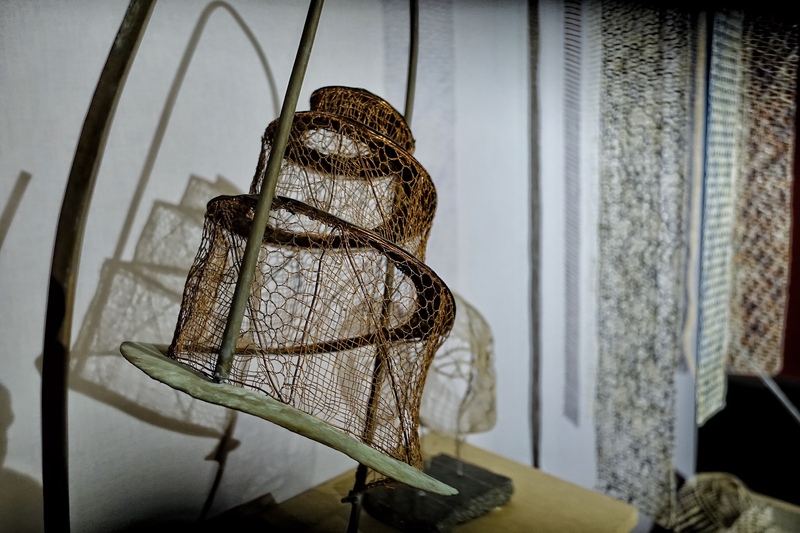

“Zennekant” is an association which owes its birth to a small group of former students of the Academy in Liederkerke. Three of us travelled from Halle to Ninove in Flemish Brabant twice a week. There we learned the classic techniques and were submerged in a well of creativity by our teachers of modern lace. Although some of these teachers had never touched a bobbin, they encouraged us to think beyond simple threads and constructions in one dimension. Ideas came to us in the car as we travelled home. We wondered how to link their homework with our visions and how to work them in lace.
Thus, the idea of creating 3D forms in bobbin lace was born. “Head”, a work by Ingrid De Dobbeleer, is a good example: there the bobbins and pairs are faced with an existing shape. It was necessary to experiment and find how to take the bobbins from the bottom to the top, to feel the threads and the underlying form. The security provided by the pillow was lost.
At the Academy we met Rita Van Cotthem, a source of inventiveness and the link between our lace teacher, her daughter and the working of the laces. Rita quickly became a member of “Zennekant”. Her work, “Thread and Copper Sheet” is based on “Memorial to the Third International” by Vladimir Tatlin, created in 1919-1920. Having started off as a small group of six, “Zennekant” now has about thirty members. Each of them can take part in projects where creative and technical support are given if necessary. “Momentum” is a good example, born out of a joking comment heard during a lace demonstration: “Let’s be serious; if not I shall punish you by asking you to make two metres of bobbin lace”. As the participants thought the idea was interesting, the project was launched. A base thread was supplied, which could be alternated with a member’s own choice of coloured thread. Then a ground had to be chosen and we had to get to work.
The result was really useful. Thanks to its simplicity, we have been able to exhibit it dozens of times, and, seeking optimal use of the space, in a different arrangement each time. The laces are sometimes knotted, some passing over the others, or they form a fan. At the Kantcentrum Lace Museum the lengths of lace are presented side by side for the first time, thus forming a simple mobile in constant movement. Very successful in my opinion!